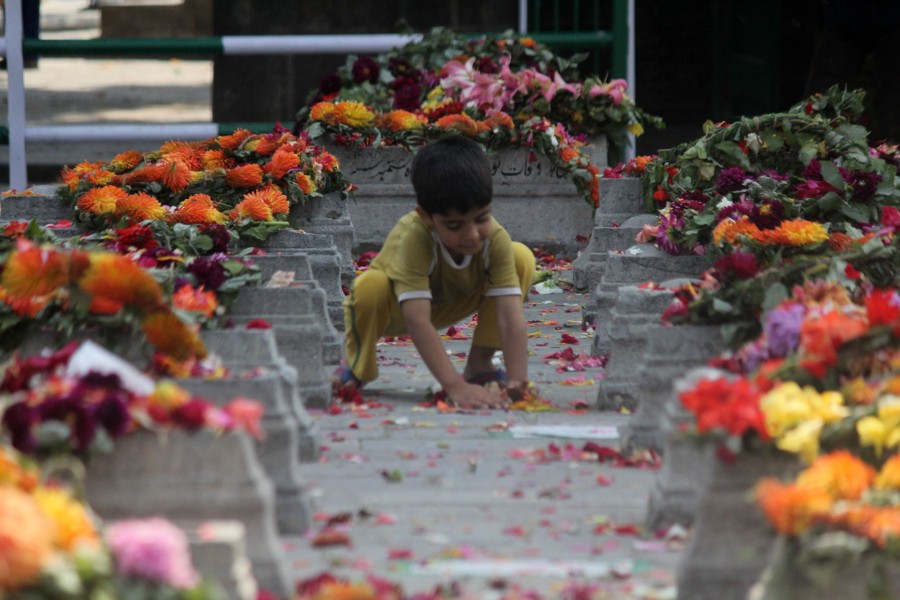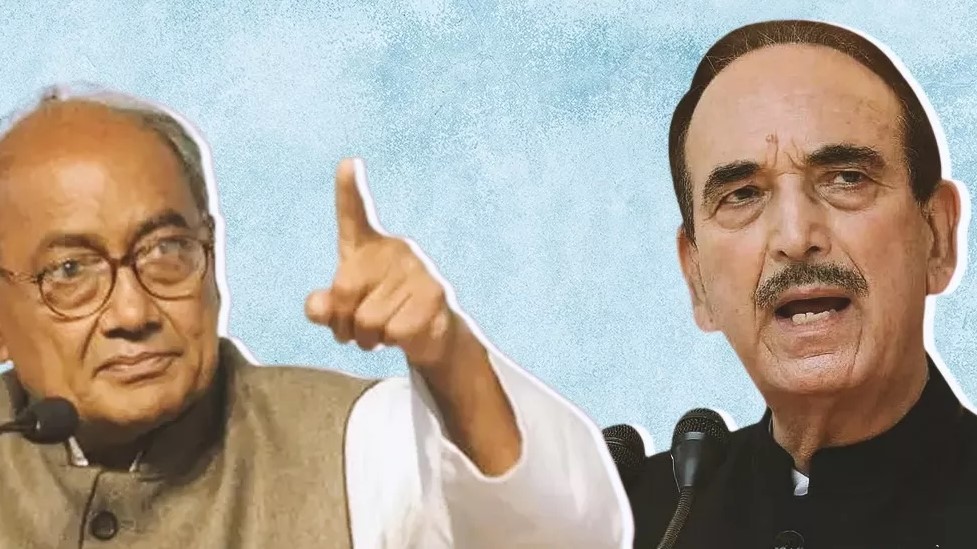Kashmir Martyrs’ Day 2025: Omar Abdullah’s Defiance & Mirwaiz’s Message on Powerlessness
By: Javid Amin | Srinagar | 15 July 2025
A Graveyard, A Locked Gate, A Defiant Climb
On the morning of July 14, 2025, something deeply symbolic unfolded in the old city of Srinagar. Omar Abdullah, the former Chief Minister of Jammu & Kashmir and a top leader of the National Conference (NC), scaled the locked gates of the Martyrs’ Graveyard at Naqshband Sahib. The graveyard was under restrictions. Omar had been allegedly placed under house arrest a day earlier—on July 13—preventing him from observing Martyrs’ Day, a politically and emotionally loaded date in Kashmir’s history.
The very next day, he defied that curb. Walking a kilometre, hopping a locked gate, offering a quiet fateha—a prayer—for the 22 Kashmiris who were killed by Dogra forces in 1931.
In response, Mirwaiz Umar Farooq, the chairman of the Hurriyat Conference, penned a line that instantly reverberated through social and political circles:
“Power teaches little, powerlessness teaches more.”
A moment of lived irony, many said. A former CM now facing the bitter medicine of the same restrictions ordinary Kashmiris and pro-freedom leaders face daily. The line from Mirwaiz was as poetic as it was political.
This article dives deep into this incident—unpacking its political meaning, historical roots, and future implications. It explores what Martyrs’ Day represents, why Mirwaiz’s words hit home, and how symbolic actions are becoming acts of defiance in today’s Kashmir.
The Historical Backdrop: What Happened on July 13, 1931?
Before we delve into the modern political theatre, let’s rewind to the origin of Kashmir’s Martyrs’ Day.
On July 13, 1931, a crowd had gathered outside the Central Jail Srinagar to witness the trial of Abdul Qadeer, a young man accused of inciting rebellion against the autocratic Dogra regime. During the waiting period, a man stood up to deliver the adhan (Islamic call to prayer). As he began, Dogra soldiers shot him dead. One by one, 21 more stepped up, and each was shot in turn.
Twenty-two men died that day—unarmed, unwavering, and unapologetic.
Their martyrdom ignited a political awakening. It galvanized resistance against Dogra autocracy and became a symbolic reference point for self-determination and dignity in Kashmir.
For decades after, July 13 was observed officially as Youm-e-Shuhada (Martyrs’ Day)—recognized even by governments, taught in textbooks, and commemorated by leaders across ideological lines.
That changed in 2019, post the abrogation of Article 370.
From Reverence to Removal: Martyrs’ Day Erased From Official Calendar
In 2020, the Union Territory administration removed July 13 from the list of official holidays in Jammu & Kashmir. It sent shockwaves through civil society, opposition parties, and historians.
Suddenly, a day once central to Kashmiri political identity was wiped off the government calendar.
The move was widely interpreted as part of a broader project to “de-Kashmirize” public memory—to disconnect Kashmiris from their past and replace it with a sanitized national narrative.
Political analysts, both inside and outside Kashmir, argued that it wasn’t just about a date—it was about erasing the memory of resistance and the language of dignity.
And so, visiting the Martyrs’ Graveyard now carries with it layers of political risk and meaning.
Omar Abdullah’s Climb: More Than Just a Gate
On July 13, Omar Abdullah tweeted that he had been put under house arrest and prevented from visiting the graveyard. His tweet read:
“So much for the claims of normalcy. I’ve been locked up in my home and not allowed to step out.”
By the next day, on July 14, he defied that restriction. Videos surfaced of him walking through the narrow lanes of Srinagar, and scaling the locked gates of Naqshband Sahib’s Martyrs’ Graveyard.
To many, this act was rich in political symbolism:
-
A former Chief Minister of a state reduced to a Union Territory, locked out of public memory.
-
A man once in power, now getting a taste of the arbitrary restrictions imposed on others.
-
A politician trying to reclaim political space through symbolism, in an increasingly restricted civic environment.
Was it a publicity stunt? Was it genuine? Perhaps it was both. But what’s undeniable is that the act caught public attention.
Mirwaiz Umar Farooq Responds: The Power of the Powerless
Mirwaiz Umar Farooq, who has spent more than four years under house arrest post-2019, knows a thing or two about the suppression of political voice.
His response on X (formerly Twitter) was philosophical, yet razor-sharp:
“Today the CM sahab @omarabdullah tasted the bitter medicine of authoritarian high-handedness and subsequent helplessness that common Kashmiris face every day… Hoping this experience shifts his focus to what is the first priority of every people—upholding their dignity and fundamental rights.”
This wasn’t just a jab. It was a challenge—to all mainstream politicians who had once legitimized the system that is now tightening its grip.
Mirwaiz turned the lens inward—asking: Will this experience lead to empathy, to solidarity, or just another episode in performative politics?
A Deeper Analysis: When Memory Becomes Resistance
Why is this incident so significant?
Because it’s not about visiting a graveyard. It’s about what that visit represents.
In Kashmir today, remembrance is resistance.
-
The state controls who can grieve, what they can commemorate, and how.
-
Political memory is being rewritten—schoolbooks revised, holidays dropped, symbols reinterpreted.
-
Those who attempt to publicly mourn or remember are often detained, silenced, or criminalized.
When Omar Abdullah climbs a gate to offer prayers, it’s not just an act of remembrance—it’s a protest against erasure.
When Mirwaiz points out the irony, he’s saying: Now do you see what we’ve been saying all along?
The Politics of Selective Grief: Who Gets to Mourn?
The 1931 martyrs were Kashmiris—Muslims, yes—but also symbols of anti-autocracy, social justice, and dignity.
But their memory has become politicized. Different political camps try to claim or reject them based on their narratives.
-
The Hurriyat sees them as part of the resistance legacy—a struggle for azadi (freedom).
-
The mainstream parties like NC and PDP invoke them as early symbols of Kashmiri self-rule.
-
The current dispensation at the Centre views them through a communal or secessionist lens—one to be managed or erased.
This leads to an absurd situation where paying respects becomes controversial, and graveyards become sites of state surveillance.
Powerlessness as Political Education
Mirwaiz’s line—“Powerlessness teaches more”—is rooted in lived Kashmiri experience.
-
Power teaches comfort, insulation, and denial.
-
Powerlessness teaches empathy, pain, and truth.
For years, people like Mirwaiz, Yasin Malik, and countless civilians have faced house arrests, curfews, and silence.
Now that former rulers are facing those same controls, there’s a moment of reflection.
Could this be a turning point in political consciousness? Could former rivals now find common cause in defending civil liberties and dignity?
Time will tell.
The Shrinking Civic Space in Kashmir
This entire episode is also a reminder of the rapidly shrinking space for political expression in Kashmir.
-
Peaceful assemblies are often banned under Section 144.
-
Religious gatherings require permissions.
-
Political leaders are frequently detained under PSA (Public Safety Act) or informal restrictions.
-
Journalists are raided, arrested, or harassed.
In such an environment, walking to a graveyard becomes an act of courage.
The State’s hypersensitivity to symbolic gestures suggests not strength—but insecurity. An unelected administration treating flowers and prayers as potential threats.
Public Reactions: Hope, Irony, and Skepticism
Public reactions on social media and in civil society ranged across a spectrum:
-
Some lauded Omar Abdullah for “finally walking the talk”.
-
Others pointed out the hypocrisy, asking where this energy was when he was in power.
-
Many appreciated Mirwaiz’s dignified but biting response.
What’s clear is that the incident sparked a much-needed conversation—about dignity, memory, political unity, and the ethics of remembrance.
A Call for Unity or Just Another Political Cycle?
Will this episode lead to genuine solidarity across political lines?
Or will it simply become another news cycle—forgotten in the chaos of everyday politics?
The optimist in Kashmir still hopes that shared powerlessness might forge unexpected alliances—between mainstream parties, civil society, and pro-rights activists.
If nothing else, perhaps it will lead to more respect for those who have faced suppression for decades, even if you disagree with their ideology.
Final Thoughts: Memory, Mourning, and Meaning in Kashmir
In Kashmir, to remember is to resist.
The act of mourning is political, because the State has tried to control who is remembered, and why.
Omar Abdullah’s dramatic climb and Mirwaiz Umar Farooq’s poetic response offered more than headlines—they gave us a window into the ongoing contest over memory and meaning in Kashmir.
Let us not forget: the 22 men who died in 1931 did not belong to any party. They stood up for dignity, faith, and justice. Their graves should be open to all, their memory should unite—not divide.


